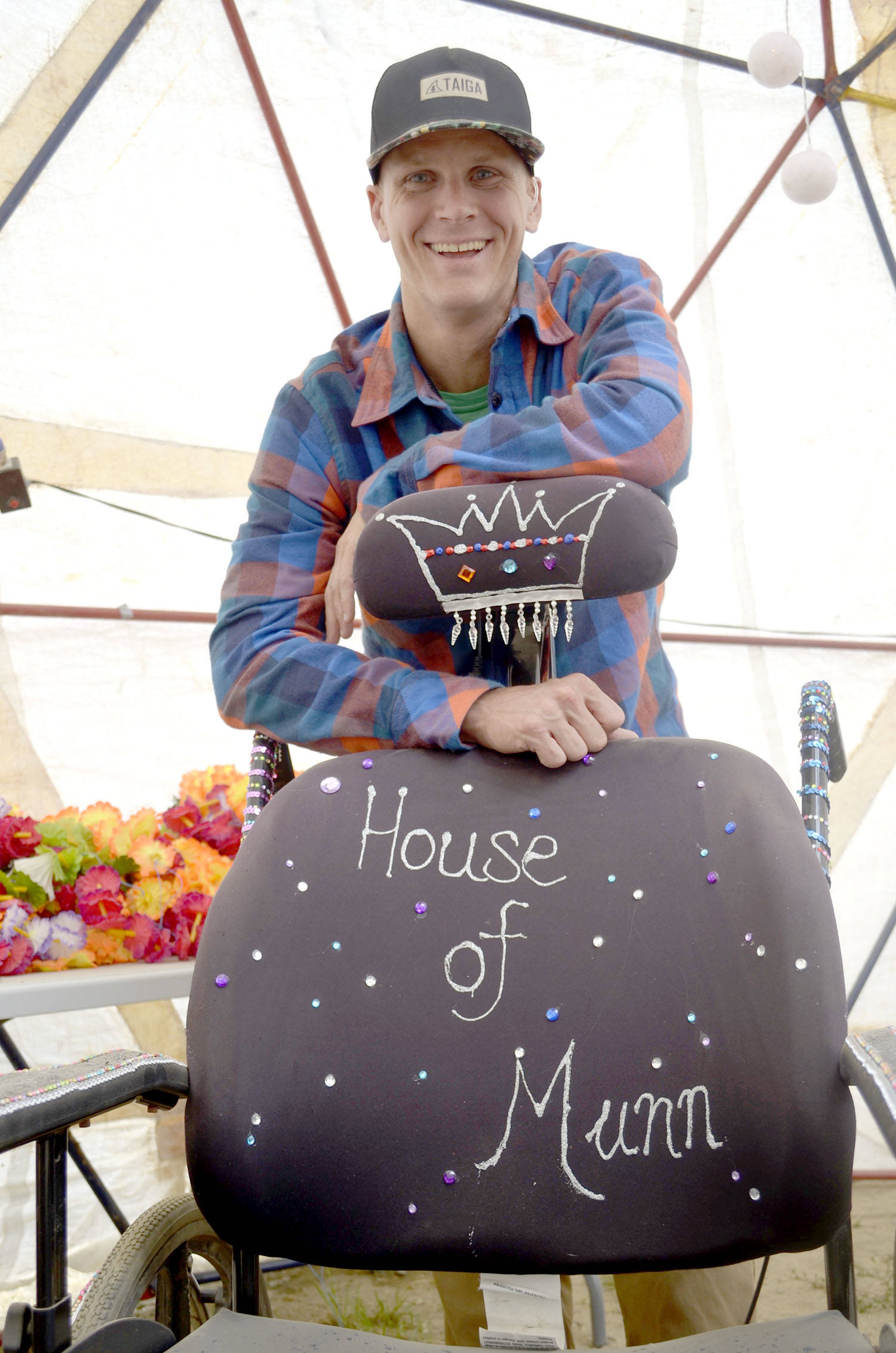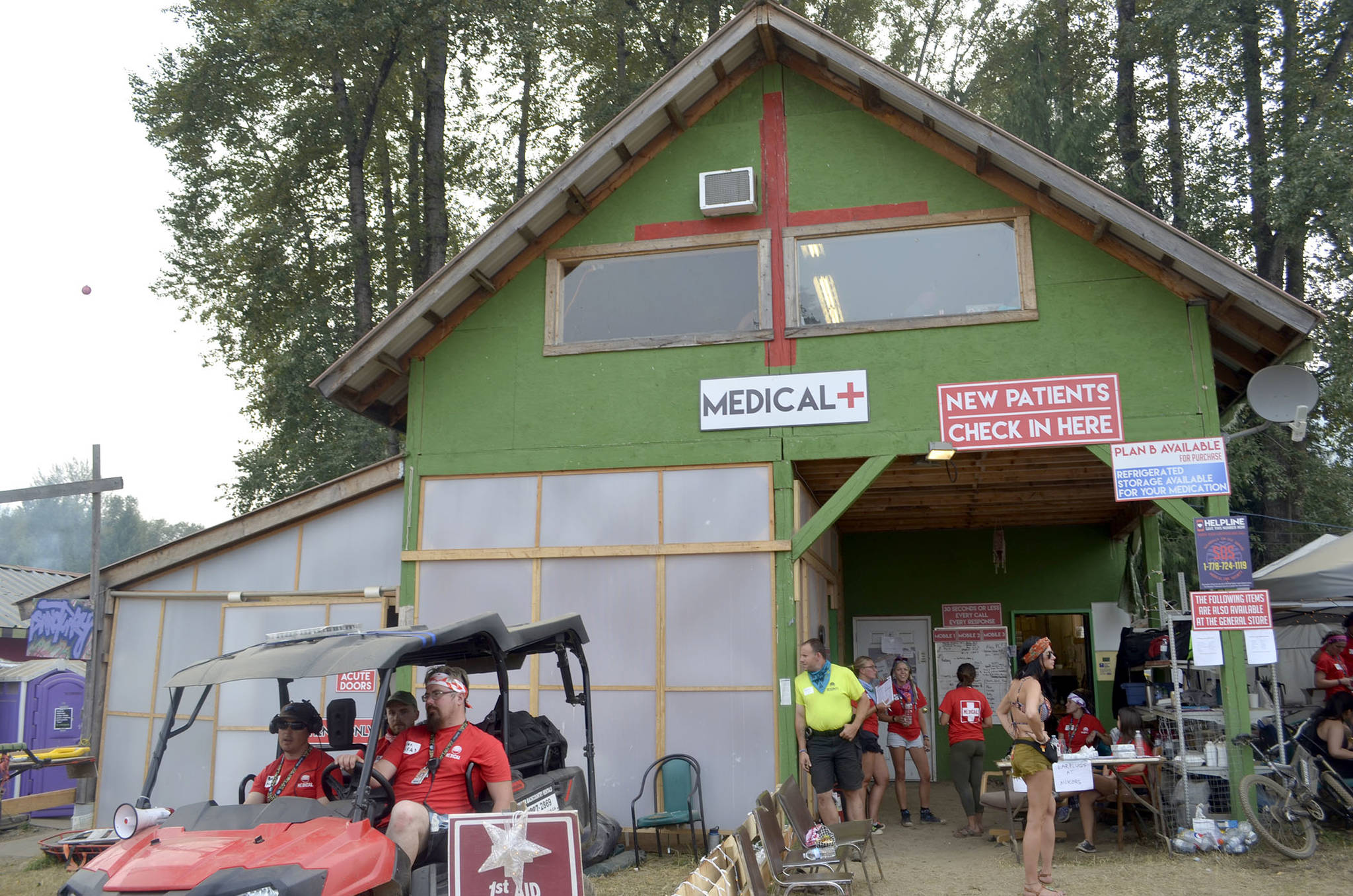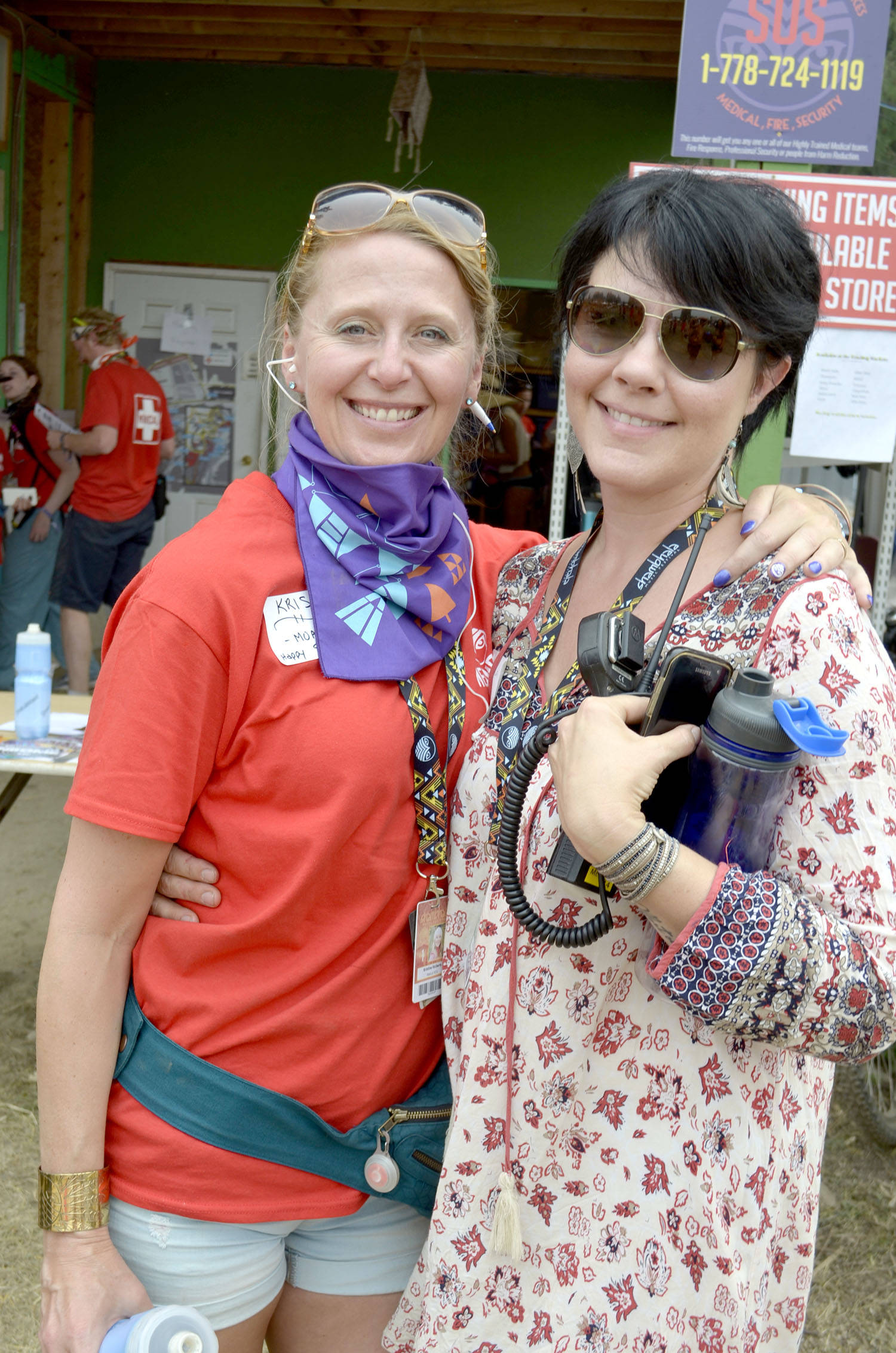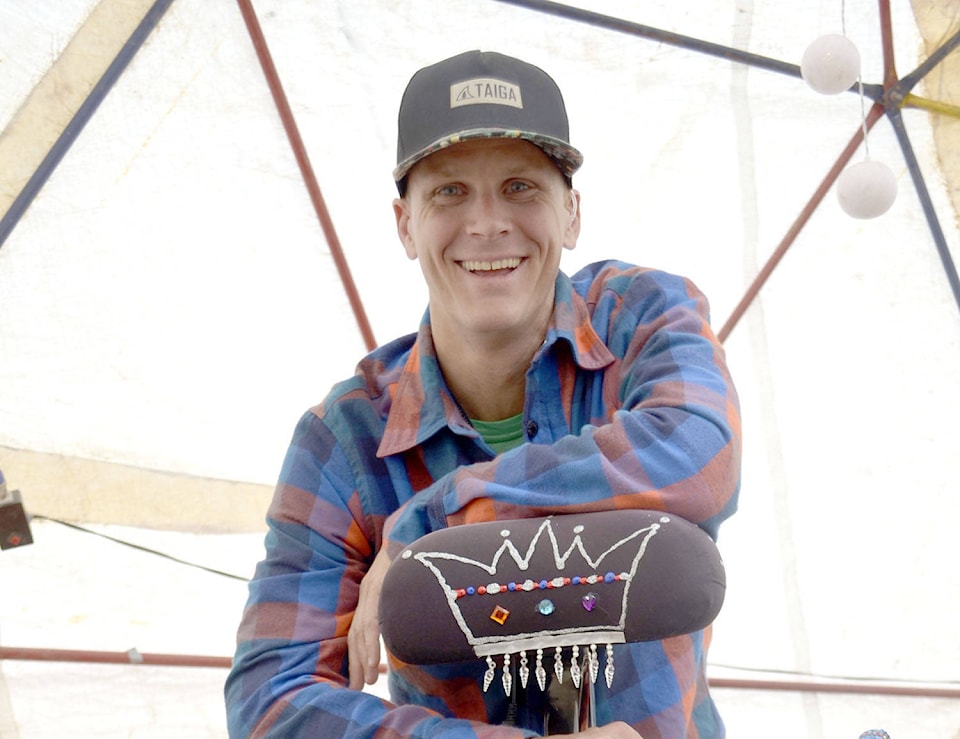When the Shambhala Music Festival is in full swing, head doctor Brendan Munn is responsible for a hard-partying population larger than the City of Nelson, and his team has to routinely maneuver vehicles on to crowded dance floors and retrieve injured ravers without interrupting the revelry.
It’s a big job.
“For me, Shambhala is a great combination of music and medicine — my two favourite things,” the 40-year-old emergency room and intensive care doctor from Mont-Tremblant, Quebec told the Star.
“The medical care that’s provided here is pretty unique. This was an opportunity for me to develop and build a unit that’s designed to respond to the kind of unusual environment you get here of clinical cases and interesting challenges, plus the spectrum of stuff you see in terms of medical emergencies.”
Now that he’s been working at the festival for 7 years — the last four in charge of medical — Munn’s starting to compile data, develop best practices and study harm reduction trends that have yet to be explored in the field of mass gathering medicine.
And as he travels to medical conferences in places such as New York and South Africa to share his findings, repeatedly he learns that comparable literature in many cases doesn’t even exist.
Bringing the ICU to the backwoods
Shambhala is approximately half an hour from Salmo, with the closest hospital an hour away in Trail. During the five days of the festival approximately 17,000 people camp out on the remote Salmo River Ranch, and they bring with them a multitude of health concerns.
By the time the music starts on Thursday night, playing for 20 hours a day throughout the entire weekend, Munn’s medical team is working around the clock, cycling through a series of cases involving everything from splinters, broken bones and dehydration to panic attacks, sexually transmitted infections and mental breakdowns brought on by sleep deprivation and intoxication.
It’s a job head nurse Anna Lauriente relishes.
“It’s like guerilla medicine. You’re in a tent with a dirt floor but you’re a fully functioning field hospital, with all these interesting cases coming through — and we’re always busy,” she said.
“We see a constant, steady stream coming all day and night for minor wounds — a lot of people just decide not to wear shoes, I don’t know why, so we end up doing a lot of foot care. And then in the nights it gets really hectic.”
Outside Shambhala headquarters, four-person teams of front-line response workers wait in ATVs to be informed of incidents occurring elsewhere on the property. From there they can deploy to any of the seven stages, each with a unique set of challenges, and load the patient on for transport. Currently they have an average two-minute response time to anywhere on the ranch.
Once patients arrive back at headquarters, they’re treated on-site, while some are escorted to a recovery space called The Sanctuary or housed in a women’s safe space area. It’s only the most extreme cases that get sent off the farm — and according to Lauriente, there are fewer every year.
“This is a much more mellow festival in the medical tent than it was 10 years ago, and I think that’s a testament to the harm reduction practices Dr. Munn has introduced and the work he’s been doing,” said Lauriente.
“He’s a visionary and I believe he’s changing the face of mass gathering medicine.”
Munn has embraced the philosophy of harm reduction, and aims to live by a phrase he attributes to medical blogger and doctor Scott Weingart: “We’re bringing the ICU to the backwoods.”
Pioneers in mass gathering medicine
In the weeks leading up to Shambhala, Munn led a series of training workshops on topics such as airway support, toxicology and field medicine — requiring all volunteers to know the signs of an overdose and to complete naloxone training. It was an ambitious undertaking that hadn’t happened in years past.
“We had different modules that all the volunteers were required to take, and nobody has ever done that at Shambhala before. Brendan has such lofty goals and high hopes, and he’s really taken us to a new level,” said Lauriente.
“Lots of people think we’re nothing but this hedonistic party that happens every year, but there are legit highly educated professionals here who are pioneers in mass gathering medicine and they’re doing amazing work behind the scenes.”
Munn began this work after being recruited by long-time medical leader Alex Chudis. He works alongside another doctor, Nick Sparrow, and an advanced life support paramedic named Craig Bertagnolli, and together they train the paramedics and the field crew.
These are the teams tasked with retrieving party-goers from the Salmo River, locating them on packed dance floors and administering First Aid until they can get them back to the rest of the team.
In total, there are seven teams of doctors with medical students, residents, psych nurses and RNs, each of them committed to a pair of 12 hour shifts over the course of Shambhala weekend. Some of those people are veterans, and some of them are Shambhala virgins.
For the past few years they’ve even had a psychiatrist on the team.
“We have more resources than some hospitals, when you look at what we offer with ANKORS and the Sanctuary and everything else. I had a young man come in who had been sober for a few months, and he was feeling unsure about his sobriety, so I was able to offer him Camp Clean Beats (a sobriety-themed section of the festival) as a solution and send him in that direction,” said Lauriente.
She’s proud to be part of it, saying “Shambhala has made me a better nurse.”
‘They thought I was a wacky Canadian’
The first health emergency that jumps to most people’s minds when they think of Shambhala is drug overdoses, but many of the substances being consumed by festival-goers these days have yet to be studied, making the call on how to most effectively treat patients on them something of a guessing game.
According to Munn, when he first started working for Shambhala he was extremely uncomfortable.
“I inherited a team that had already been built on observed best practices here at Shambhala, so people had developed skills to treat unique cases based on trial and error, on experience, but there wasn’t a lot of evidence to support what we were doing at first.”
So it’s been a learning curve for him.
“It’s easy to study emergency care because there’s an emergency department in every hospital around the world, whereas mass gathering medicine situations like this only occur at particular times, under a range of different circumstances. There aren’t as many opportunities to study it.”
Along with the nearby ANKORS team, which provides free pill and drug testing for festival-goers, Munn can study the effects of different drugs and figure how best to effectively coax the person on them back to a healthy state. He can compare one patient on ketamine to another on MDMA and a third on several substances at once, observing their symptoms and attempting to replicate successful treatments they’ve invented themselves during previous cases.
In his travels, he’s learned how few festivals are doing this work. During the New York Mass Gathering Medicine Summit in April 2016, Munn presented in conjunction with Stacey Lock of the harm reduction team and described the services they provide at Shambhala, showing them “how harm reduction services benefit not only the patient but also the doctor and medical team they present to.”
The approach he described was radical to them.
“They thought I was a wacky Canadian. At that conference there was a lot of pushback because they’re not allowed to do the harm reduction stuff we do here. There just isn’t the liability framework or the legal appetite to take on these challenges.”
‘Why don’t the cops lock everyone up?’
As far as Munn’s concerned, Shambhala is a world leader when it comes to incorporating harm reduction philosophies into their operation, and the work they’re doing is already making a global splash as their data is shared and dissected by medical professionals.
But he still gets accused of enabling drug users.
“We hear, ‘They’re all doing drugs, why don’t the cops lock everyone up?’ but really I think this is no different than being a doctor in any emergency room — the reality is we spend all our time managing people who make decisions that are risky, whether it’s someone going to the Whistler Bike Park or somebody taking a substance.”
For him, it doesn’t matter why people need his help — just that they do. He’s seen prisoners receive care as part of his education, and though society may often lack empathy for criminals, he sees them as just as worthy of receiving treatment — same as festival-goers, even the ones considered to be putting themselves in harm’s way with illicit substances.
Said another way: “Medical care is a human right.”
“This has been an evolution in my thinking too. Sometimes as a learner I was faced with situations I didn’t know how to feel about, how to manage it and react, and this place has informed a lot of my practice for how I treat that population now.”
Munn has looked at the numbers, and noticed that the medical emergencies the festival routinely faces have begun to go down in the past few years, despite the fentanyl crisis and the rapidly evolving drug scene, and he believes it’s partially because they’re catching cases earlier, but also because of education and training.
“We’re becoming skilled at managing the normal cases we see over and over, so they become sort of regularized and are more easy to deal with, and the sickest people coming in are getting quality care because we’re equipped and prepared. Every year we get better.”
‘An unparalleled medical service’
These days Munn’s work is getting noticed both internationally and locally, and Kootenay Lake Hospital’s Dr. Shiraz Moola is only one of the medical professionals lauding the work being done there. After attending the festival this year, he was quick to sing his colleagues’ praises.
“I believe that Brendan has worked to create an unparalleled medical service at SMF. As we learn in medical school, ‘In god we trust, all else bring data.’ Brendan and his colleagues have an active program of research going on during the festival. In this way they are able to dispel some myths regarding the care at the festival but also to optimize outcomes,” he said.
“He has attracted a broad range of medical staff from all over the country. This includes anesthetists, a psychiatrist and others. He has worked diligently to breakdown hierarchy and create an environment of respect and care for each other and our patients at the medical tent. The care at SMF I believe is as good or better than one would receive anywhere in the country.”
When Lauriente set out to honour Munn this year, gifting him a bedazzled wheelchair with “House of Munn” written on it, she wanted to let him know they were all his faithful followers.
“That was a bit of tongue-in-cheek joke, but I wanted him to realize that this is the House of Munn, we’re all on his team, and I think he’s brought us to new heights we never would’ve reached without him.”



